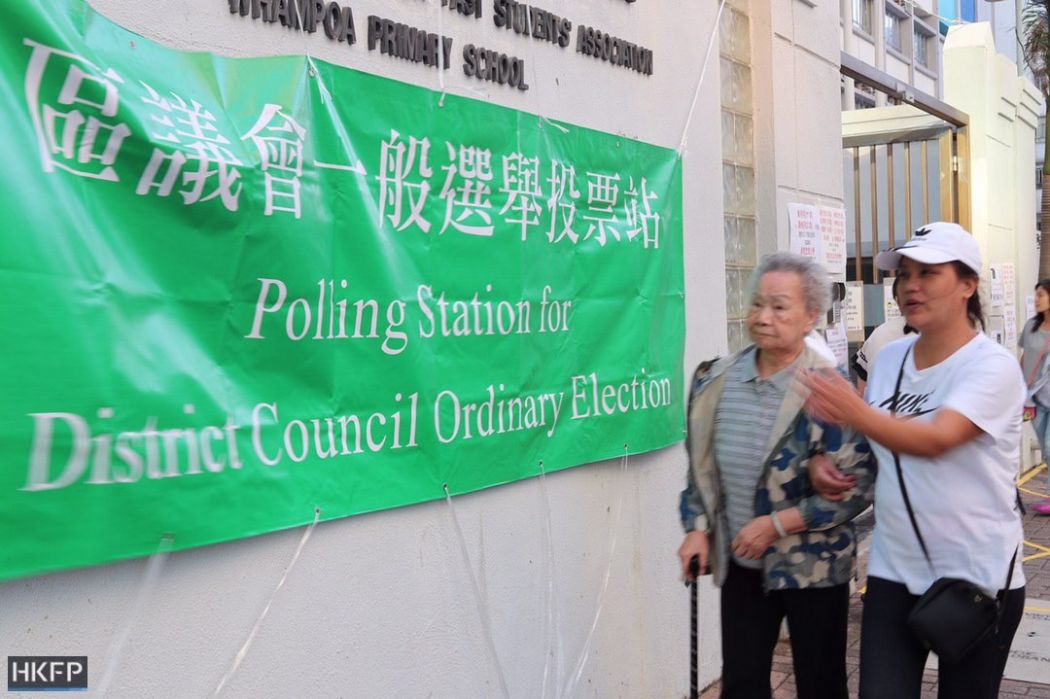Back in April, when the extradition law saga was still in its early stages, and the tragedy Hong Kong has since been put through could have been avoided, Chief Executive Carrie Lam refused to meet with pan-democrats.
Democrats had wanted to sit down with the city’s leader and go through each detail of the amendments to the Fugitive Offenders Ordinance that was clearly a mistake. They even said that if it wasn’t withdrawn, it would bring “strong tensions in society.”

Lam was not going to waste her time debating with the democrats, nor be persuaded into shelving the law – which, as we know, she was forced shelve in September when it was much too late.
Of course, the way she behaved with the pan-democrats was nothing new. Every Chief Executive has done the same. They consider the pro-democracy camp to be a nuisance – they are a minority (never mind that this is due to the Legislative Council’s electoral system being so unrepresentative). Beijing can’t stand the sight of them, and they are happily ignored.
But people did take to the streets in growing numbers, and tensions in Hong Kong escalated beyond anything in recent memory. Many have been injured, some even died, businesses have had to shut down, families and friends have been torn apart. Still, Lam’s perception of what has been going on hasn’t changed.
Only two weeks ago, as the consequences of her terrible extradition bill were playing out, Lam – using Maoist language – called protesters the “enemies of the people.” Partying like it was 1949.
Before, she had called those marching in protest as “having no stakes in society” and kept ignoring everyone who wasn’t willing to tell her she was right. During her public appearances, she had looked ever more sullen. Talking to the media, she looked like someone busy with the most unpleasant of tasks. She faced citizens looking even unhappier, slouching and nearly morose. The contrast with her appearances in Beijing has been striking: coquettishly dressed, smiling, alert and enthusiastic.

Refusing to talk to those who have different opinions of course always convinces us that our ideas are totally sound, while dismissing anything that goes against them as nonsense.
Lam has been locking herself into her own bubble with determination. Even old friends of hers have been saying in private that their attempts to convince Lam of changing her mind – withdrawing the extradition bill earlier or calling for an independent inquiry into police conduct – have come to nought. A friend of Lam and a former cabinet member who asked not be quoted said the leader actually stopped seeing anyone who contradicted her and allowed the police to deal with public tensions with more teargas and arrests. She has never visited the relatives of those who have committed suicide and, infamously, decided to tend to damaged MTR turnstiles instead.
And Lam has kept convincing herself that a “silent majority” was in accord with her – in spite of election polls showing that despite a lack of public support for protesters’ violent methods, many Hongkongers agree with their demands.

Before Sunday, this mythical “silent majority” was invoked by many. In mid-November, when barricades were going up all over town and universities had become the latest frontline, I saw a woman looking dangerously pale and agitated, struggling to lift a makeshift barricade blocking Bonham Road, near the University of Hong Kong. Five protesters in Guy Fawkes masks had built it half-heartedly, tried unsuccessfully to light it, and then walked away. As they left, the woman decided to open the road again, lips white, with anger so strong that her hands shook. I asked if she was ok. She replied saying, “They do not represent us, you know!” – assuming that I was in support of the barricade-builders. “We don’t want to see our city destroyed!” she added. I was a proxy for her fury, and she gave me a piece of her mind about the protesters and invoked the same “silent majority” argument to say that this was all profoundly wrong. I was relieved that talking to me seemed to calm her down, though, as I feared she might have a heart attack.
On elections day, however, the “silent majority” showed that it wasn’t really on the side of the government, and for a short while, you could hear the popping sound of bubbles bursting, echoing from the Government House to Zhongnanhai in Beijing.
But bubbles can be more powerful than reality. Beijing seems to be scrambling to find a way to put together a story it can stick to. It reported on national media that the District Elections in Hong Kong took place, but went for a minimalist approach that failed to report the results altogether.

Given Beijing’s track record of not just ignoring pro-democracy representatives, but even barring them from entering the country, it is likely that the central government, too, hadn’t expected a “yellow wave” to materialise.
Like Lam, the central government had been lambasting the protesters, deciding that since they didn’t represent them, they didn’t represent anyone.
The hope is that now that since the pro-government “silent majority” myth has been exposed, a different approach can be put in place. But bubbles have a tendency to recreate themselves pretty quickly once they have been burst. A dialogue, less reliance on repression and more on allowing Hong Kong to truly enjoy “two systems” inside of “one country,” a more tolerant attitude towards students, protesters and their supporters, greater scope for pro-democracy forces to have a say in government, could all have a positive effect over a polarised society.
However, the shock of the yellow landslide might not last long enough, and a new form of denial might take its place. Lam has proven she is very capable of barricading herself into denial. Will the electoral results be enough to make her look beyond the debris of her burst bubble?
